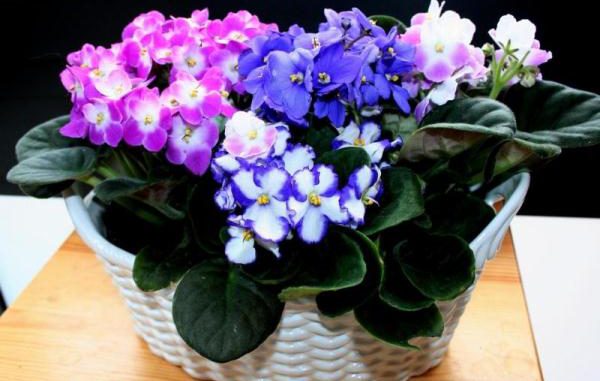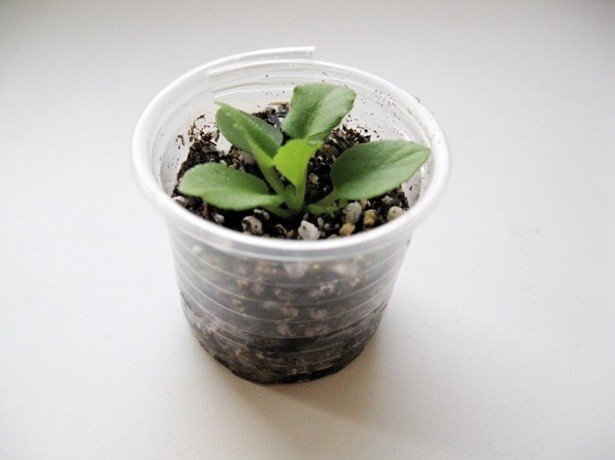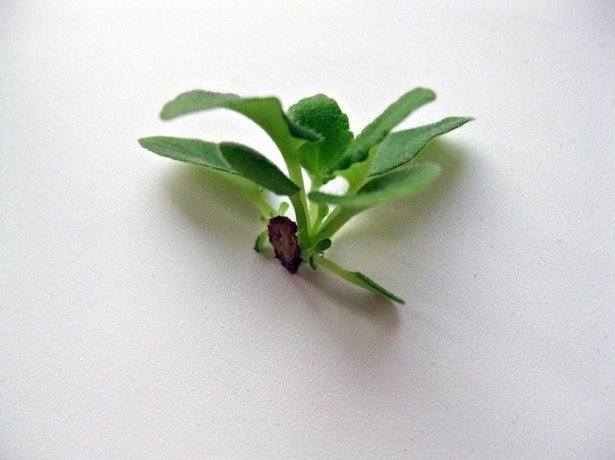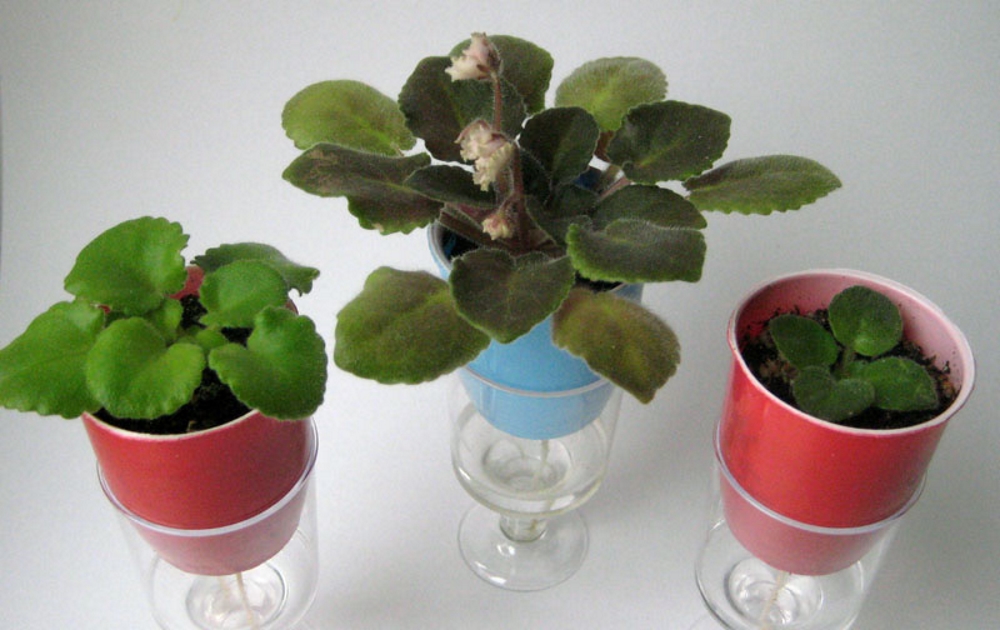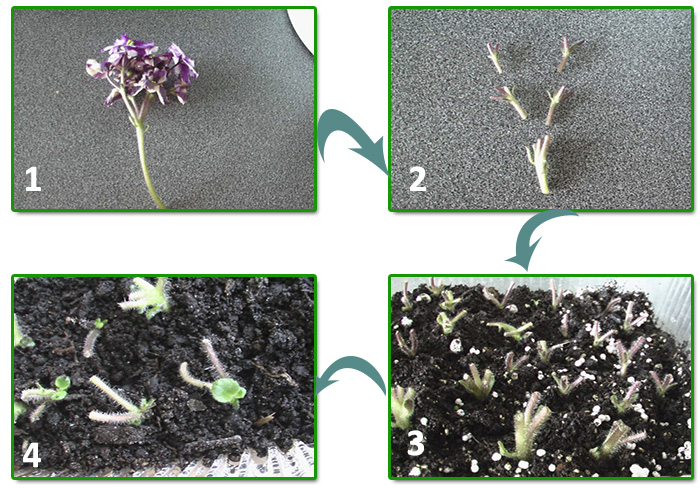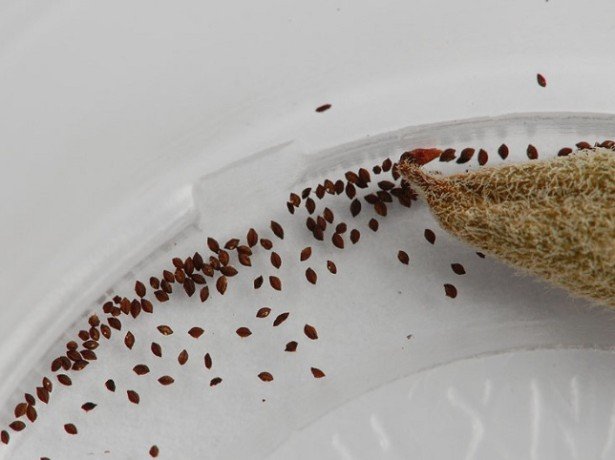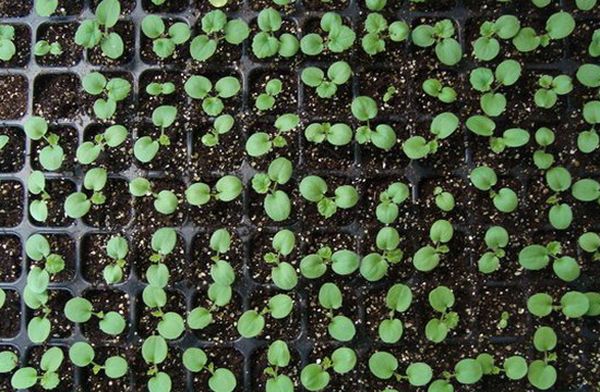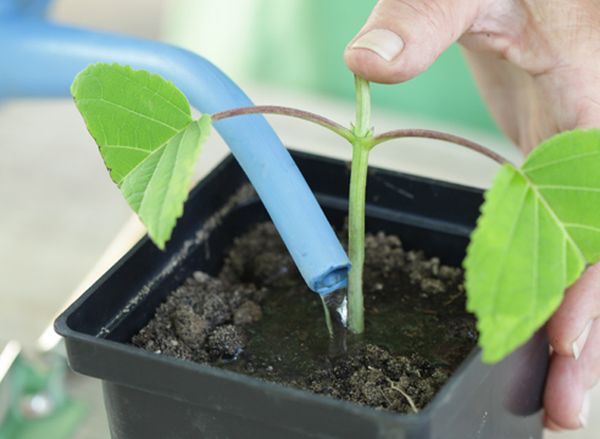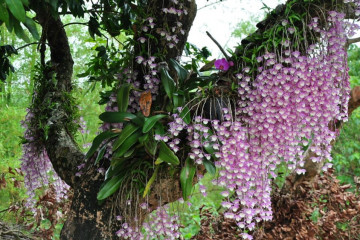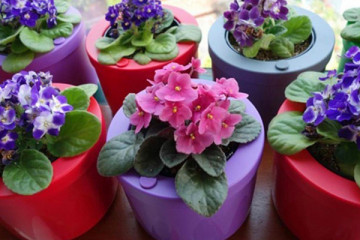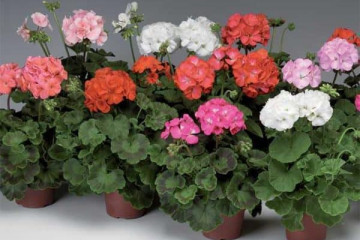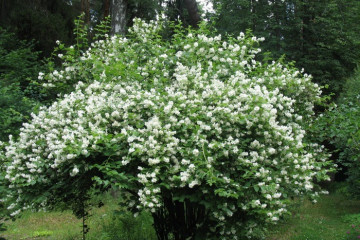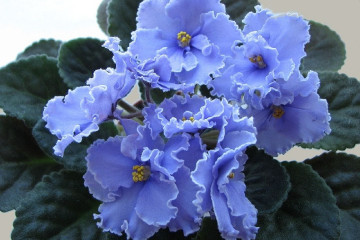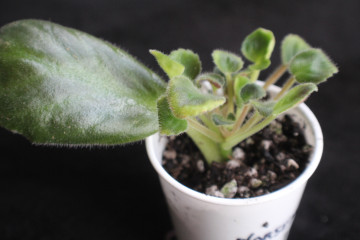How to propagate a violet - step by step instructions
Content:
- General information about the plant and its propagation methods
- How to grow a violet from a leaf at home
- Reproduction by a fragment of a leaf
- Reproduction by stepchildren
- Peduncle propagation
- Growing from seeds
- Rules for the care of young sprouts
- The choice of materials for planting
- Common breeding mistakes
The appearance of a room violet in the house makes you want to decorate all window sills with this plant. Growing violets or, as it is also called, saintpaulias is an easy process even for a novice florist. One has only to deal with the question of how to propagate a violet and provide it with suitable conditions.
General information about the plant and its propagation methods
Violet is a short perennial with a short stem and pubescent leaves. The leaves grow in a rosette shape. The place of natural growth is all regions of Africa. The species belongs to the Gesneriev family.
Reproduction of violets is carried out in several ways:
- The fastest is breeding with a whole leaf or part of it.
- Seed method.
- Peduncle rooting method.
- Stepsons or cuttings.
To choose a specific method, it is advisable to study each in detail.
How to grow a violet from a leaf at home
It can be diluted in this way in water or immediately in the ground. It is important to approach all stages of planting as responsibly as possible.
Leaf selection and preparation for germination
Before you root a violet from a leaf, you need to choose it correctly. The result directly depends on the quality of the planting material. Violets reproduce from both the lower and middle rows of leaves. A good seedling should be naturally colored and free from damage or stains.
A pre-selected leaf is separated from the bush. Often they simply pinch it off from the mother plant. A sanitized sharp knife or a special pruner should be used. Making a bevel cut causes less damage to the plant. It is important to cut off not near the main stem, but to leave a small stump.
The place of the cut on the planting material and on the violet itself is necessarily treated with charcoal. To obtain the best result, preliminary soaking is carried out in a weak solution of potassium permanganate. The procedure does not exceed 2-3 hours.
Optimal conditions for germination
Germination should be carried out under the right conditions: a shaded area and a constant room temperature in the range of 20-22 ℃ above zero. For propagation by a leaf, the wick irrigation method is used. This will not only save the flower from getting unwanted liquid, but will also help the violet to develop much faster and lay buds.
Stages of work step by step
It is necessary to decide in which environment the rooting will take place. Florists use water or soil for these purposes. A disinfection procedure is mandatory. To do this, dilute a tablet of activated carbon in a glass, where the leaf will take root. Reproduction of violets with a leaf at home step by step:
- For each cutting, a glass or plastic container is prepared.
- The water level should not exceed one centimeter.
- The process does not require a change of water. The main thing is to periodically add water, you must not allow complete drying out.
- The initial stage of decay of the lower part of the cutting is possible. To save the planting material, the decayed part is cut off and sprinkled with charcoal. In this case, the water is replaced.
The first root will appear within 1 week. After root formation, the seedling is transplanted into a pot. A fragile plant is planted in a small container, this helps the violet to develop evenly.
Violet propagation algorithm in soil:
- They are planted directly into the ground in small plastic cups or pots.
- Drainage is provided. For these purposes, foam or crushed expanded clay is perfect.
- The soil for violets is used light and loose.
- The planting of the cuttings is carried out immediately in the soil mixture to a depth of 1-1.5 cm.
- Water directly under the root as the topsoil dries.
Follow-up care
Immediately after transplantation, the leaf will look drooping - this is a normal phenomenon arising from the stress of violets. How to propagate with leaves? The leaf plate will noticeably condense immediately after the appearance of the first roots. Moderate watering is carried out no more than once a week. Fertilization is highly undesirable. Top dressing will not allow the root system to develop.
Reproduction by a fragment of a leaf
This method is used for rare species or in case of damage to the leaf plate. In order to prevent the disease from spreading further, the leaflet is removed. All rotten areas are removed, and a healthy piece can be planted.
Leaf selection and preparation for germination
For reproduction, a horizontal cut is made on the top of the sheet. Before planting, the resulting material is left for 10-15 minutes in air to stop the juice and the cut site is treated with charcoal.
Optimal conditions for germination
For fast rooting, a "breathing" substrate is used. The room temperature should be kept within the range of 22-25 ℃. Lighting of plantings for 12 hours is a prerequisite for high-quality planting material.
Stages of work step by step
Part of the leaf should be planted in light perlite soil. The cut is deepened by 1-1.5 cm. To maintain the required humidity, the container with the planting is covered with polyethylene or glass. The method allows you to quickly obtain a large amount of planting material, from which many seedlings will later grow.
Follow-up care
Planting care consists in timely watering and creating the most comfortable conditions. Failure to comply with the temperature regime can lead to the fall of the inflorescences, and in the future to the rotting of the species.
Reproduction by stepchildren
Despite the fact that grafting of violets is recognized as the most effective method of propagation, it is far from suitable for all varieties of culture. For some species, for example, for chimeras, the use of this method will lead to the loss of individual qualities. Therefore, use pinching of violets.
What should be a stepson
Lateral stepchildren, which have formed in the axils of the flower, are subject to transplantation.The length of the planting material must be at least 3 cm.
Optimal conditions for germination
The most acceptable temperature for germination of this species is from +18 to +20 ℃. Due to such requirements, many flower growers often have problems with the care of seedlings. The plant is able to survive only a one-time drop in temperature to +12 ℃. It is important not to forget that the violet is a heat-loving plant and takes on a "tired" look in winter. In winter, it is advisable to transfer the flower to the northern or western windowsill.
Stages of work step by step
For rooting, babies use water or a light substrate. The development of the stepson in the water occurs in stages:
- Manganese is added to a dark glass container for disinfection.
- A baby is dipped into purified water. It is enough to pour 1 cm of liquid.
- As in the case of rooting by leaves, they monitor the water level, preventing moisture evaporation.
- Transplanting into the ground is carried out only when the root rosette reaches 8-10 cm.
For rooting directly into the ground, only breathable, light soil mixture is used. Working material - vermiculite without added earth.
To speed up the rooting process, create a greenhouse climate for the future violet - cover the container with a bag or any other transparent material. Daily ventilation is essential.
Follow-up care
Due to the fact that the stepson is initially a more developed planting material, caring for him will not be difficult. The main requirement is to maintain a normal light level for 12-14 hours. In the first days after planting, the room temperature must be maintained around +18 ℃. After rooting, it must be raised to +25 ℃.
Peduncle propagation
To preserve the species, the peduncle breeding method is used. A fully blossoming or only faded plant is used.
Features of germination
The method is mainly used in cases when it is required to preserve the varietal characteristics of the species. Before planting, the sections are disinfected.
Optimal conditions for germination
For germination with the help of a peduncle, an increased humidity is created in the room. A container with a lid is suitable for these purposes. A mixture of sphagnum and perlite is used as a soil.
Stages of work step by step
Gardeners do not recommend using unblown buds. The germination process consists in performing the following activities:
- Cut off the peduncle. The procedure is carried out only with a pre-processed instrument: scissors, a blade.
- Planting is carried out in moss or sphagnum.
- The planted material is covered with any transparent material.
- When the rooting process is complete, when new rosettes are formed on the planting material.
- After that, they are transplanted into a pot.
Follow-up care
The appearance of young leaves on a seedling means the successful completion of the process. During rooting and growing green mass, create the most comfortable conditions for the plant:
- daylight hours at least 12 hours;
- required room temperature from +20 to +22 ℃;
- watering as the top layer of the soil dries up.
They wait until the root rosette is sufficiently developed, and they begin to transplant the violets to a permanent place.
Growing from seeds
The most difficult breeding method. Choose two flowering plants. Manually collect pollen from the peduncles of one of them and pollinate another flower. The seed pods will ripen in about 4-6 months.
What growable seeds look like
Self-collected planting material is the key to quality growth in the future. If it is not possible to perform the procedure with your own hands, you should take the most responsible attitude to the choice of purchased seed.
It is not recommended to purchase seeds from dubious sellers. Buying at a specialty store or at a flower show will give you confidence in quality.
How to prepare seeds for planting in soil
Before sowing seeds in the ground, pre-planting measures are carried out:
- freshly harvested seeds are dried in room conditions for 2 days;
- for disinfection, they are soaked for 30-50 minutes in a weak solution of manganese;
- the next stage is drying the seed.
Landing in the ground is performed by a surface method. In the future, the container with seeds is sprayed from a finely dispersed spray bottle.
Optimal conditions for seed germination
For normal development, the container with landings is covered with glass. Illumination with fluorescent lamps is carried out for 10-12 hours daily. To avoid rotting or acidification of the soil, the plantings are aired daily.
When the substrate dries out, the seeds may not sprout at all. You can remove the glass only after the first leaves appear on the seedlings.
Rules for the care of young sprouts
Transplantation into individual containers is carried out at the moment when the violet sprouts reach 1-2 cm. During the period of active formation, the maximum lighted growing conditions are created.
The choice of materials for planting
Not only high-quality seed is the key to an excellent result. It is important to take the choice of containers for planting and the quality of the soil as seriously as possible.
Soil characteristics
There is a huge variety of commercially available soils for violets. In specialized stores, a thorough control over the quality of goods is carried out. If it is not possible to purchase a ready-made substrate, you can prepare the soil for planting yourself. For this, peat, river sand, leaf residues, perlite or special moss are mixed in equal proportions.
Water characteristics
For irrigation, use only warm water, previously settled for 2 days. Regular watering is a prerequisite for healthy flower development.
Capacities
The root system of Saintpaulia is very small, so it is not recommended to use large containers. For a young flower, it is best to use plastic cups or shipping pots. An adult plant will react categorically to a large pot - it stops developing.
Common breeding mistakes
To obtain the desired result, the main thing is not only to select high-quality planting material, but also to create the right conditions for rooting. Failure to follow the rules of reproduction and further care often leads to the invasion of harmful parasites. Red ticks can develop due to elevated temperatures. When they appear, it is urgent to treat violets with insecticidal agents.
By performing a number of simple activities, in a fairly short period you can get a whole flower gallery from one flower. She will not only delight with her appearance, but also cheer up and cleanse the air in the house.
